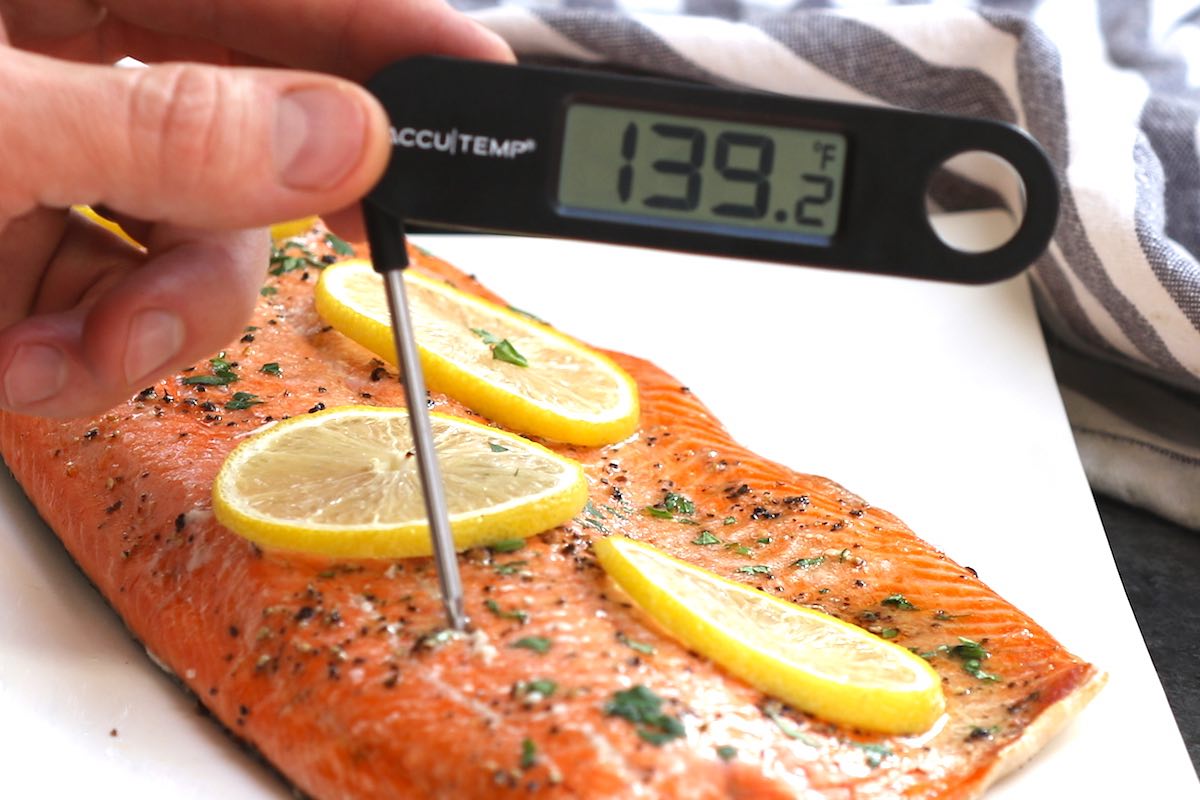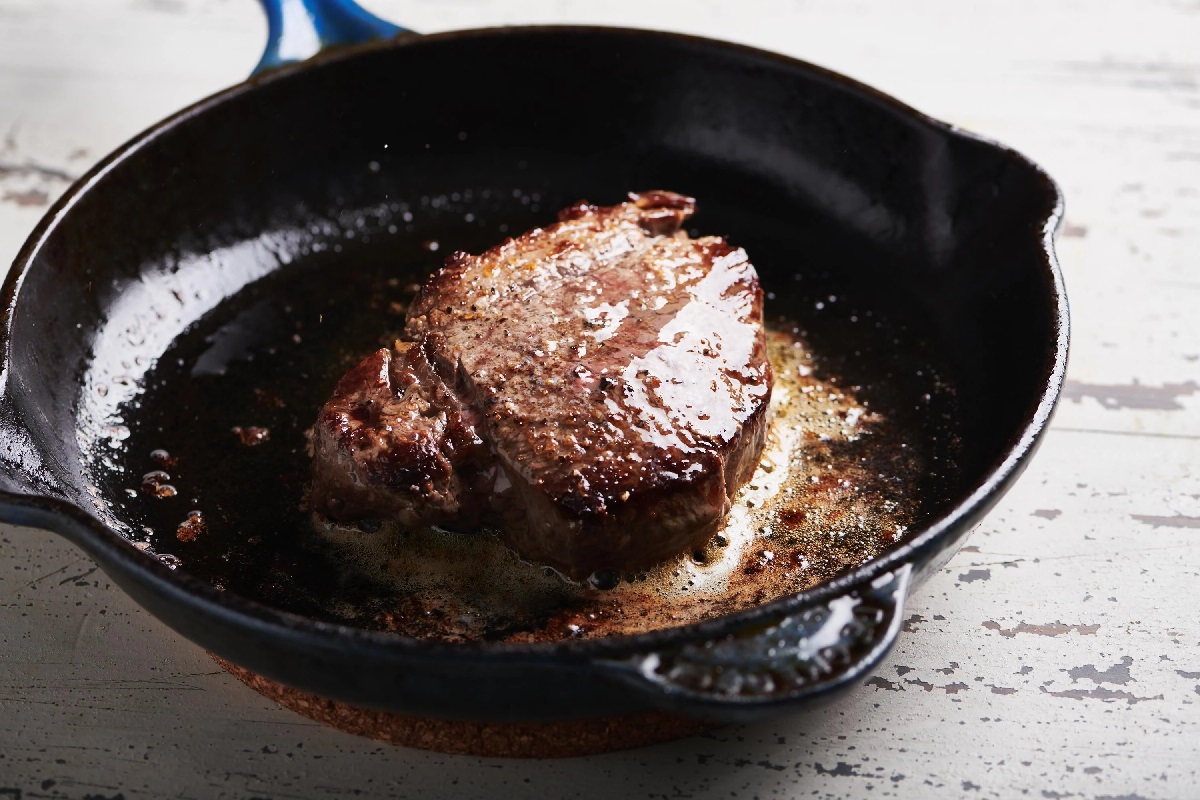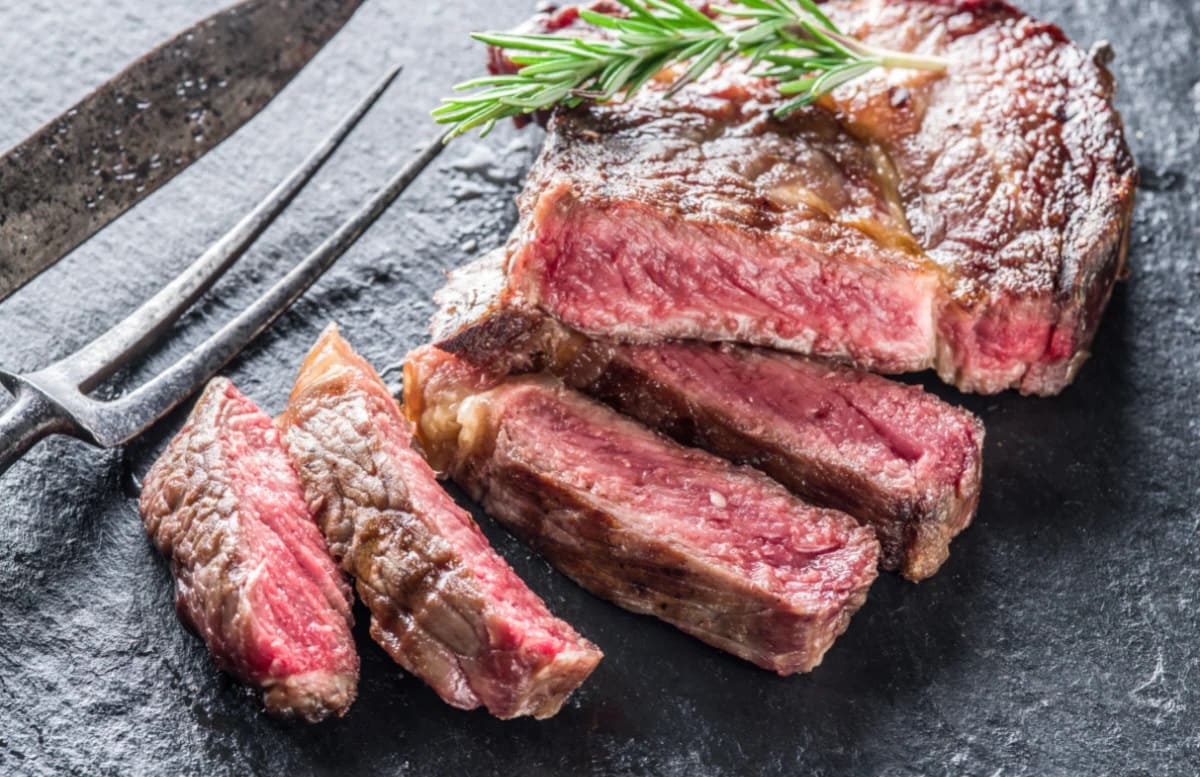Home>Culinary & Beverages>Optimal Internal Temperature For Cooking Salmon


Culinary & Beverages
Optimal Internal Temperature For Cooking Salmon
Published: February 21, 2024
Discover the ideal internal temperature for perfectly cooked salmon with our expert culinary and beverages guide. Master the art of cooking salmon to perfection.
(Many of the links in this article redirect to a specific reviewed product. Your purchase of these products through affiliate links helps to generate commission for Temperatures.com, at no extra cost. Learn more)
Table of Contents
The Importance of Internal Temperature
The internal temperature of salmon is a critical factor in ensuring that it is safe to eat and has the desired texture and flavor. When cooking salmon, achieving the optimal internal temperature is essential for both food safety and culinary excellence. The internal temperature of the fish determines its doneness and directly impacts its taste and texture.
From a food safety perspective, cooking salmon to the recommended internal temperature helps eliminate harmful bacteria and parasites that may be present in the fish. Consuming undercooked salmon can pose health risks, including the potential for foodborne illnesses. Therefore, understanding and adhering to the optimal internal temperature guidelines is crucial for safeguarding the health of those who will be enjoying the dish.
Moreover, the internal temperature of salmon significantly influences its texture and flavor. Overcooking can result in dry, tough, and less flavorful fish, while undercooking may lead to a raw and unpleasant dining experience. By cooking salmon to the recommended internal temperature, chefs and home cooks can ensure that the fish is moist, tender, and bursting with its natural flavors.
In summary, the internal temperature of salmon is a pivotal aspect of the cooking process. It not only ensures the safety of the dish but also directly impacts its taste and texture. By understanding the significance of internal temperature and following the recommended guidelines, individuals can savor perfectly cooked salmon that is both safe and delicious.
Read more: Optimal Internal Temperature For Meatloaf
Factors Affecting Salmon's Internal Temperature
Several factors influence the internal temperature of salmon during the cooking process. Understanding these variables is crucial for achieving the desired level of doneness and ensuring a safe and enjoyable dining experience.
-
Thickness of the Fillet: The thickness of the salmon fillet plays a significant role in determining its internal temperature. Thicker cuts require longer cooking times to reach the recommended temperature, while thinner portions may cook more quickly. It's essential to consider the thickness of the fillet when determining the cooking duration to achieve the optimal internal temperature.
-
Starting Temperature: The initial temperature of the salmon before cooking can impact the cooking time and internal temperature. Salmon that is closer to room temperature will cook more evenly and require less time to reach the desired internal temperature compared to fish that is straight out of the refrigerator.
-
Cooking Method: The cooking method employed, whether it's grilling, baking, broiling, or pan-searing, can affect the internal temperature of the salmon. Each method distributes heat differently, which can influence the rate at which the fish cooks and reaches the recommended internal temperature.
-
Oven Temperature: When baking or roasting salmon, the oven temperature is a critical factor in achieving the optimal internal temperature. Higher temperatures will cook the fish more quickly, while lower temperatures may require a longer cooking duration to reach the desired internal temperature.
-
Resting Period: After removing the salmon from the heat source, it continues to cook due to residual heat. Allowing the fish to rest for a few minutes before serving is essential for ensuring that it reaches the recommended internal temperature and achieves the desired level of doneness.
By considering these factors, cooks and chefs can effectively manage the cooking process to achieve the optimal internal temperature for salmon. Each variable plays a crucial role in determining the doneness and overall quality of the dish, making it essential to carefully account for these factors during the cooking process.
Recommended Internal Temperature for Cooking Salmon
The recommended internal temperature for cooking salmon is a pivotal aspect of preparing this delectable fish. The United States Department of Agriculture (USDA) advises that salmon should be cooked to an internal temperature of 145°F (63°C). This temperature ensures that the fish is safe to consume, effectively eliminating any harmful bacteria or parasites that may be present.
When the internal temperature of the salmon reaches 145°F, the flesh becomes opaque and easily flakes with a fork, indicating that it is perfectly cooked. This temperature guideline applies to various cooking methods, including baking, grilling, broiling, and pan-searing.
It's important to note that the recommended internal temperature is consistent across different cuts of salmon, whether it's fillets, steaks, or whole fish. By adhering to this temperature guideline, individuals can confidently prepare and enjoy salmon dishes while prioritizing food safety.
Moreover, achieving the recommended internal temperature is crucial for preserving the delicate texture and flavor of the fish. Cooking salmon to 145°F ensures that it remains moist, tender, and flavorful, offering a delightful dining experience for those indulging in this nutritious and versatile seafood.
In summary, the recommended internal temperature of 145°F (63°C) serves as the benchmark for safely and perfectly cooking salmon. By following this guideline, individuals can savor the exquisite taste and texture of salmon while prioritizing food safety, making it an indispensable aspect of preparing this beloved seafood.
Tips for Achieving the Optimal Internal Temperature
-
Bring Salmon to Room Temperature: Before cooking, allow the salmon to sit at room temperature for about 15-20 minutes. This ensures that the fish cooks more evenly, reducing the risk of overcooking the exterior while waiting for the interior to reach the desired temperature.
-
Use a Meat Thermometer: Invest in a reliable meat thermometer to accurately monitor the internal temperature of the salmon. Insert the thermometer into the thickest part of the fillet to ensure an accurate reading. This simple tool eliminates the guesswork, helping you achieve the perfect doneness without the risk of under or overcooking.
-
Apply the 10-Minute Rule: As a general rule of thumb, aim to cook salmon for about 10 minutes per inch of thickness. This guideline applies to various cooking methods, providing a rough estimate of the cooking duration required to reach the recommended internal temperature. However, it's essential to use a meat thermometer to verify doneness accurately.
-
Consider Carryover Cooking: Recognize that salmon continues to cook after being removed from the heat source due to residual heat. To account for this, aim to remove the salmon from the heat when it is a few degrees below the recommended internal temperature. Allowing the fish to rest for a few minutes will enable it to reach the desired temperature while maintaining its succulent texture.
-
Adjust Cooking Time for Thickness: Thicker cuts of salmon require longer cooking times to reach the optimal internal temperature, while thinner portions may cook more quickly. Adjust the cooking duration based on the thickness of the fillet to ensure that the entire piece of fish reaches the recommended temperature without overcooking.
-
Use Visual Cues: While a meat thermometer is the most accurate way to gauge the internal temperature, visual cues can also indicate the doneness of the salmon. Look for the flesh to turn opaque and easily flake with a fork, signaling that it has reached the recommended internal temperature of 145°F (63°C).
By incorporating these tips into your cooking routine, you can confidently achieve the optimal internal temperature for salmon, ensuring that it is safe to consume and perfectly cooked. These guidelines empower you to master the art of cooking salmon to perfection, delivering a delightful dining experience for yourself and those you share it with.
Checking Internal Temperature Without Overcooking
Ensuring that salmon reaches the recommended internal temperature without overcooking is a delicate balance that requires precision and attentiveness. Overcooking can result in dry, tough fish, detracting from the delightful dining experience that perfectly cooked salmon offers. Therefore, employing effective methods to check the internal temperature without overcooking is essential for achieving culinary excellence.
One reliable method to check the internal temperature without overcooking is by using a meat thermometer. This indispensable tool allows you to monitor the temperature of the salmon accurately, ensuring that it reaches the recommended 145°F (63°C) without the risk of overcooking. To use a meat thermometer, insert the probe into the thickest part of the fillet, ensuring that it reaches the center without touching the bone if present. By periodically checking the temperature as the salmon cooks, you can remove it from the heat source promptly once it reaches the desired internal temperature, preventing overcooking and preserving its succulent texture.
Another approach to checking the internal temperature without overcooking involves the 10-minute rule. While this rule provides a general guideline for cooking duration, it can also serve as a cue to start monitoring the salmon's internal temperature. As the cooking time approaches the estimated duration, begin using a meat thermometer to check the temperature periodically. This proactive approach allows you to gauge the salmon's progress and promptly remove it from the heat source once it reaches the recommended internal temperature, preventing overcooking and preserving its delicate texture and flavor.
Visual cues can also aid in checking the internal temperature without overcooking. As the salmon cooks, observe the changes in its appearance and texture. Look for the flesh to turn opaque and easily flake with a fork, indicating that it has reached the recommended internal temperature. By relying on visual cues in conjunction with a meat thermometer, you can confidently assess the doneness of the salmon without overcooking, ensuring that it is safe to consume and exquisitely flavorful.
By incorporating these methods into your cooking routine, you can effectively check the internal temperature of salmon without overcooking, ensuring that it is safe to eat and perfectly cooked. These approaches empower you to master the art of cooking salmon to perfection, delivering a delightful dining experience for yourself and those you share it with.















